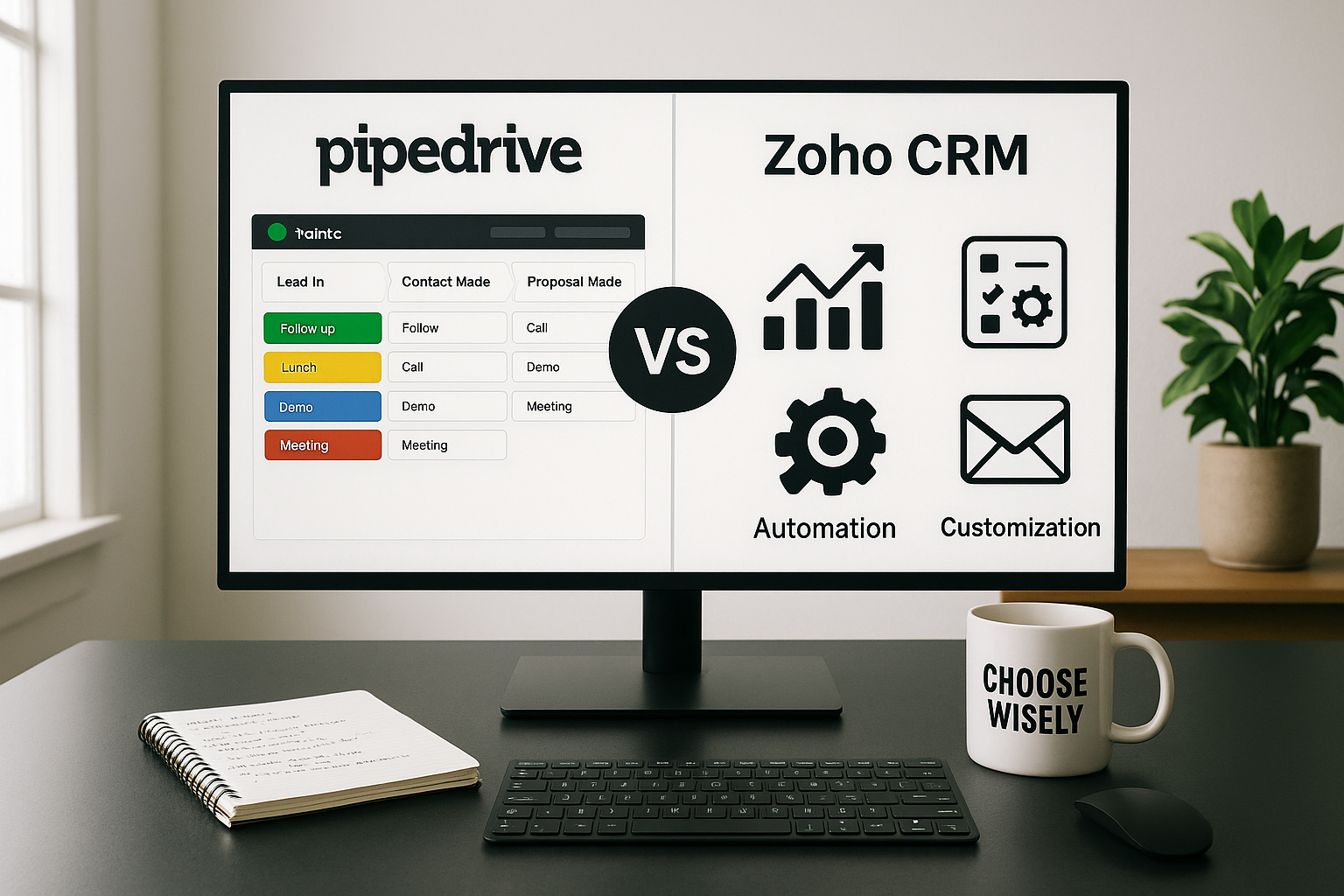Download Now: Free "CRMs Powerhouse 2023-2024" eBook
Knowing what you have in stock is crucial to running a successful business. The best free inventory tracking system syncs in real-time, providing smooth transactions for your customers whether they shop online or at your store.
Retail stores and restaurants, on the other hand, have different needs than a small manufacturing plant, so choosing the correct equipment for your business is essential. CRM for retail businesses helps manage customer interactions and data, providing valuable insights into shopping behaviors, preferences, and purchase history to help businesses personalize the shopping experience and increase customer loyalty. We looked through 10 of the best asset management systems to find simple features for stock, warehouse, order, and shipping management. We analyzed services based on industry-specific features, downsides, and overall pricing to discover the best of the best.
Powerful CRM for Retail
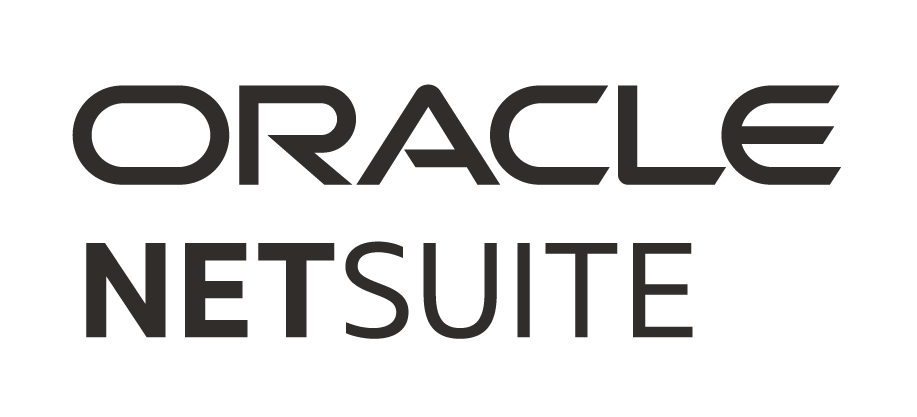
4.3
Built for retail: Deliver the ideal customer experience across all channels with a single platform.
Real-time global inventory and order management: Create a buy-, return- and fulfill from anywhere experience.
Unified omnichannel commerce: Provide a consistent shopping experience and build strong customer loyalty across web, mobile, in-store and call-center channels.
What is inventory management software?

What is the best free inventory management software? Inventory management is an expensive process. Businesses make no compromises when it comes to building an efficient and precise procedure for storing, picking, and shipping their products. These costs, however, are justified.
That's great but does use open-source or low-cost inventory management software offer the same amount of benefit? First and foremost, free inventory management software is just that: totally free. This absence of spending immediately eliminates any cost-related hurdles to system adoption, and in the same spirit, increases the ROI associated with using this new software.
If you're coming from an analog system, transitioning to a digital system has various advantages. A floundering firm can be revived by reducing manual data entry, integrating forecasting tools, and embracing automation. Consumers who may have been lost due to shipping issues or a lack of demand planning can be brought back into the fold and converted into repeat customers.
By the way, if you are interested in CRM for the manufacturing industry, you can find the best options in our CRM Directory.
Before we get into the top platforms, one of the most important elements to examine is the must-have features of a good management system. Take a step back and consider other alternatives if the software you're considering lacks the characteristics listed below.
So, let's take a look at the Top free inventory management tools:
Why are inventory management programs important?
Inventory management programs are essential for businesses as they provide real-time visibility into stock levels, streamline operations, and reduce costs.
These programs help maintain optimal inventory levels, prevent overstock and stockouts, and improve cash flow by freeing up capital tied in unsold inventory. They enhance customer satisfaction by ensuring products are available when needed, support accurate demand forecasting, and reduce waste.
Additionally, even free material management software minimizes human error through automation, provides valuable data for informed decision-making, and ensures regulatory compliance. As businesses grow, these systems can scale and integrate with other systems for a cohesive operational view.
Features of inventory management tools

Free simple inventory software is appealing, but without these critical characteristics, the low-cost solution you've examined may not cover all of your bases.
Inventory Traceability
It's critical to keep track of a product as it moves from warehousing through shipping. A successful system will keep you updated on where a product is, when it needs to move, and how to store it at optimal warehousing efficiency, whether it uses RFID technology, barcode scanners, or real-time stock views. How do you plan for shifting demand if you don't know what products you have in stock at all times of the day?
Transfer Management
Many businesses must regularly move stock between warehouses and other sites. A good management system should make product mobility easy while also providing detailed information about each move. The option to bundle things together, often known as kits, is included in this feature.
Purchasing
Creating and sending purchase orders by hand feels like torture from the Middle Ages. You should be able to create single or bulk POs online and email them immediately to your suppliers using your free software for inventory control. When particular item levels in the warehouse decline, some solutions can produce POs automatically.
Shipping
While you may believe that shipping is a part of transportation management, your inventory system for small business free actually plays a key role in ensuring that products are sent appropriately. Multi-carrier and multi-modal shipment strategies are possible with the best systems. To ensure that your consumers receive their items on the schedule, you want as many options as possible. Many systems can generate crucial shipping documents and labels automatically, which can then be attached to packages or saved for later use as backups.
Order Management
Any free inventory tracking system worth its salt should include support for order management, from order creation through product delivery. Order management features also allow you to create custom pricing guides, provide bids to customers, track committed stock, and make invoices.
Reporting and Analytics
Any rising company's lifeblood is analytics and reporting. These tools provide real-time access to information such as demand, on-hand stock, total sales, tax information, and more. These features give managers and stakeholders current data to support their decision-making processes. Analytics can also highlight sections of your company that are hurting or inefficient, allowing you to act before more serious issues occur.
Mobile Support
With the passage of time, modern labor is growing increasingly reliant on mobility. It's becoming increasingly important to be able to get away from our desks while still being able to communicate with our inventory management software. Many modern solutions enable users to log in, update and view critical company data, manage processes, and more using internet-connected smart devices.
As companies develop cutting-edge technology, there will always be additional features to examine, but the ones listed above are an excellent place to start. We may now look at the best free inventory app.
A comparison between free and paid inventory management software options
|
Platforms |
Overall Rating |
Ease of Use |
Customer Support |
Best for |
Users |
|
Zoho |
4.5/5 |
4.4/5 |
4.3/5 |
Best for small businesses |
Unlimited |
|
Odoo |
4.2/5 |
4.0/5 |
3.7/5 |
Best for Windows |
Unlimited |
|
Delivrd |
3.8/5 |
3.9/5 |
3.7/5 |
Best for all types of businesses |
1 user |
|
PartKeepr |
3.7/5 |
3.8/5 |
3.7/5 |
Best for the manufacturing |
Available on request |
|
RightControl |
4.0/5 |
3.9/5 |
3.8/5 |
Best for eCommerce businesses |
1 user |
|
InFlow |
4.6/5 |
4.5/5 |
4.6/5 |
Best for B2B companies |
1 user |
|
Boxstorm |
4.7/5 |
4.9/5 |
4.8/5 |
Best for small enterprises |
1 user |
|
Stockpile |
4.8/5 |
4.7/5 |
4.8/5 |
Best for stockroom |
Unlimited |
|
Square |
4.6/5 |
4.7/5 |
4.4/5 |
Best for retailers |
Unlimited |
|
SalesBinder |
4.6/5 |
4.7/5 |
4.5/5 |
Best for the office |
1 user |
The limitations of free inventory tracking software
Free software inventory management can be an attractive option for businesses looking to manage their inventory without incurring additional costs. However, these tools often come with limitations that can impact efficiency and scalability. Here are some common limitations of free inventory tracking software:
- Limited features: Free software typically offers only basic features, such as simple inventory tracking and basic reporting. Advanced functionalities like demand forecasting, multi-location tracking, and integration with other business systems may not be available, limiting the software's usefulness for growing businesses.
- Data storage and limits: Free versions often come with restrictions on data storage, such as a limited number of SKUs (stock keeping units) or a cap on the number of transactions.
- Limited customization: Freeware inventory management software often offers minimal customization options, meaning businesses cannot tailor the software to their specific needs. This lack of flexibility can hinder workflow optimization and limit the ability to adapt to unique business processes.
- Lack of support and updates: Free software usually comes with limited customer support and may not receive regular updates or improvements. This can leave businesses vulnerable to technical issues, bugs, and security vulnerabilities, as well as missing out on new features and enhancements.
- Integration challenges: Free inventory control programs may not integrate well with other systems like accounting, sales, or e-commerce platforms. This lack of integration can lead to data silos, requiring manual data entry and increasing the risk of errors.
- Limited user access: Often, completely free versions of inventory software restrict the number of users or limit user permissions, making it difficult for multiple team members to access and manage inventory data simultaneously.
How we evaluated free inventory management software

To choose which inventory software is the best fit for your company's needs, consider the following considerations and evaluate them in the context of your company.
Number of users
The first one should be straightforward: How many users would your inventory management software require? Include not only yourself but anyone filling or counting inventory, as well as your accountant, if necessary. If the right people don't have access to your inventory management system, it's useless. Additional users are usually charged.
Variety of inventory
The level of sophistication required from your inventory management app is determined by the amount of inventory you have on hand. Consider not only today's inventory but also your company's long-term requirements.
Will the inventory management app you chose be able to grow with your business, or at the very least export data to another app in the future? When your present system's capabilities become limited, the last thing you want to do is have to manually reenter all of your inventory.
Type of inventory
The type of inventory you're working with may influence which inventory management software you select. Look for features that focus on location and time-in-stock reporting if temperature control or freshness are important considerations in your inventory management.
Budget
Inventory management software can be purchased for a wide range of prices, so think about how much you're willing to spend. You may save money in the long term if a somewhat more expensive inventory management system saves you time that would otherwise be spent manually maintaining your inventory or preventing costly mistakes in ordering or tracking things.
[Related article: Sales Issues in Business]
Equipment
The majority of mobile app development falls into one of two categories: iOS or Android. Unless you're in the market for new equipment, it's important examining the equipment you already have when evaluating your options.
Integrations
Do you need your inventory management tool to integrate with other systems, such as payroll or accounting software? If that's the case, look into the available software integrations to identify the best fit.
If you're on a tight budget, few inventory tracker apps will have all of the capabilities you require, so prioritize your requirements. If the pricing is good, can you live with fewer user accounts? Are you willing to experiment with different tools in order to find the right product? You'll be better equipped to find the ideal inventory management system for your company if you know exactly what you need — and what you can and can't compromise on.
Top 10 Free inventory management software
Almost all of our top free inventory software for small businesses has some limitations, but the types of restrictions vary. Some free inventory tracker has limits on how many warehouses and sales channels you can handle, while others have limits on how many orders or customers you can add. Furthermore, many of the alternatives we recommend limit the number of integrations you may utilize with your product.
Here’s how our ten free options stack up.
1. Zoho - Best for small businesses
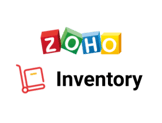 Zoho Inventory is a software program that helps small and midsize businesses manage sales, make purchase orders, and precisely track inventory. It integrates with Amazon, Etsy, and eBay, among other online marketplaces. It also works with Shopify and is available across all platforms. This free-of-charge edition includes one warehouse, 20 online and offline orders, 20 shipping labels, and 20 shipment trackings. Inventory and warehouse management, multichannel selling, reporting, and more are all supported.
Zoho Inventory is a software program that helps small and midsize businesses manage sales, make purchase orders, and precisely track inventory. It integrates with Amazon, Etsy, and eBay, among other online marketplaces. It also works with Shopify and is available across all platforms. This free-of-charge edition includes one warehouse, 20 online and offline orders, 20 shipping labels, and 20 shipment trackings. Inventory and warehouse management, multichannel selling, reporting, and more are all supported.
Key Features
- Integrate one Shopify store
- Ecommerce integrations
- Item grouping and bundling
- Barcode scanning
- Backorders and drop shipments
- Purchase order templates
- Serial and batch tracking
- Sales order management
- Invoicing
- Packaging and shipping
- SKU generator
- Reorder points
- iOS and Android mobile apps
- Mobile app: 4.5 out of 5 on Android; 4.6 out of 5 on iOS
What's Missing
- The currency functionality is inconvenient.
- Customer segmentation based on item purchases is not supported.
- No delivery notes can be printed.
- It lacks forecasting capabilities.
What's Included for Free:
- 50 orders/month
- 50 shipping labels/month
- 1 Warehouse
Pricing
- Standard - €59 per organization/month, billed annually
- Professional - €99 per organization/month, billed annually
- Premium - €159 per organization/month, billed annually
- Elite - €239 per organization/month, billed annually
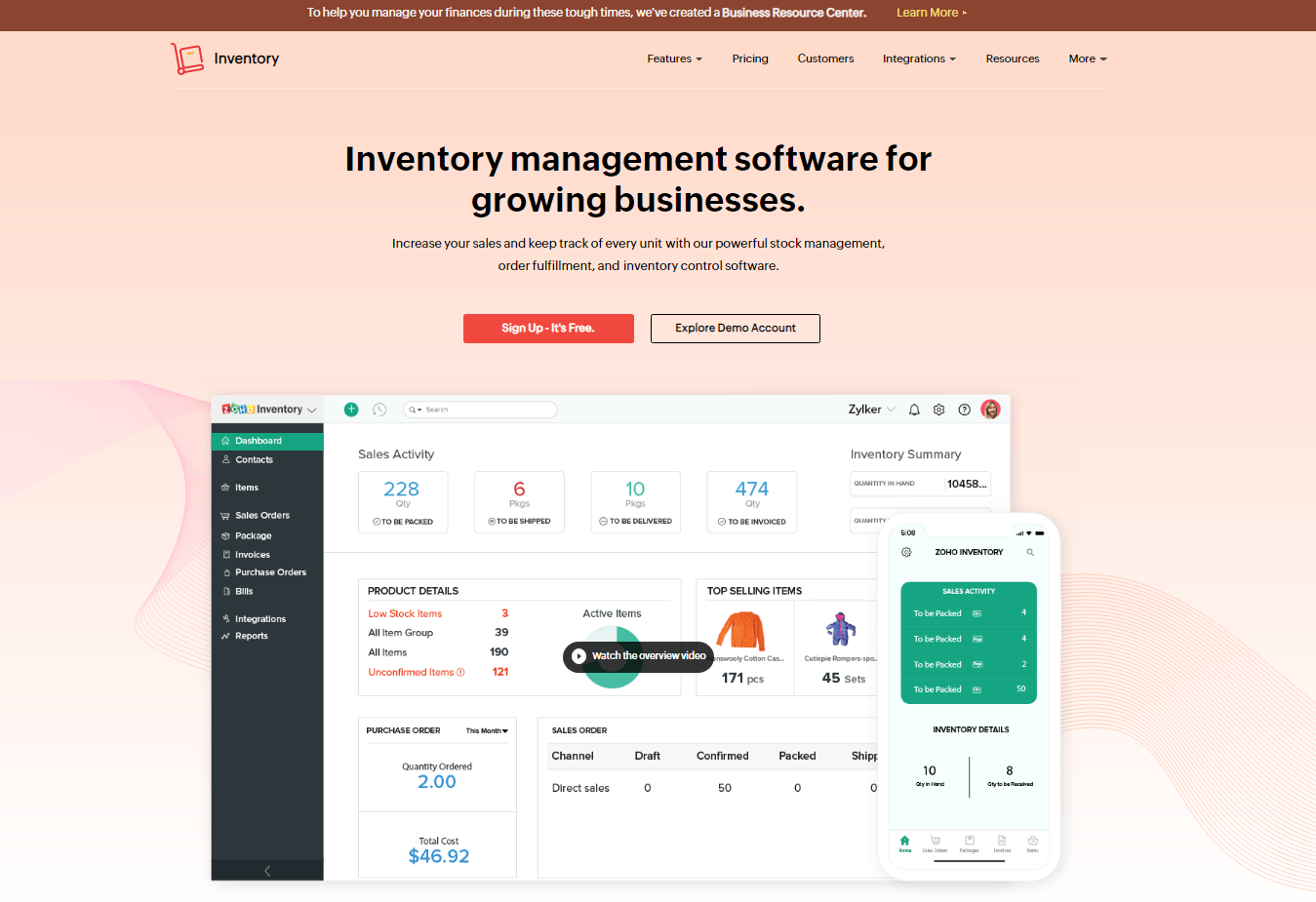
2. Odoo - Best for Windows
 Odoo is undoubtedly one of the best free inventory software options for business owners and free inventory software for Windows. It eliminates the need for unnecessary integration by removing the interface between distinct software systems. It has over 10,000 programs to handle all of your business needs in one program. The apps are completely connected with one another, allowing you to automate your entire company process.
Odoo is undoubtedly one of the best free inventory software options for business owners and free inventory software for Windows. It eliminates the need for unnecessary integration by removing the interface between distinct software systems. It has over 10,000 programs to handle all of your business needs in one program. The apps are completely connected with one another, allowing you to automate your entire company process.
When used online, this program is free for two individuals; however, if the open-source version is downloaded and self-hosted, it is free for infinite users. This program, which is based on ERP, provides an add-on app design that can be changed (increased or decreased in size) to meet the needs of the business.
Read a detailed overview of Oddo.
Key Features
- 360 Degree Feedback
- Accounting Integration
- Accounts Receivable
- Automated Scheduling
- Activity Dashboard
- Aging Tracking
- Alerts/Notifications
- API
- Applicant Tracking
- Asset Tracking
- Automated Quoting
- Backorder Management
- Bank Reconciliation
- Barcode / Ticket Scanning
- Barcoding/RFID
What's Missing
- Users cannot redo or revise adjustments after they are made.
- Not all localizations are supported.
What's Included for Free:
- Unlimited users
- Unlimited locations
- Unlimited items/products
- Unlimited transactions
Pricing
- Odoo Enterprise edition - $20 per user per month (annual billing) or $25/user/month (monthly billing)
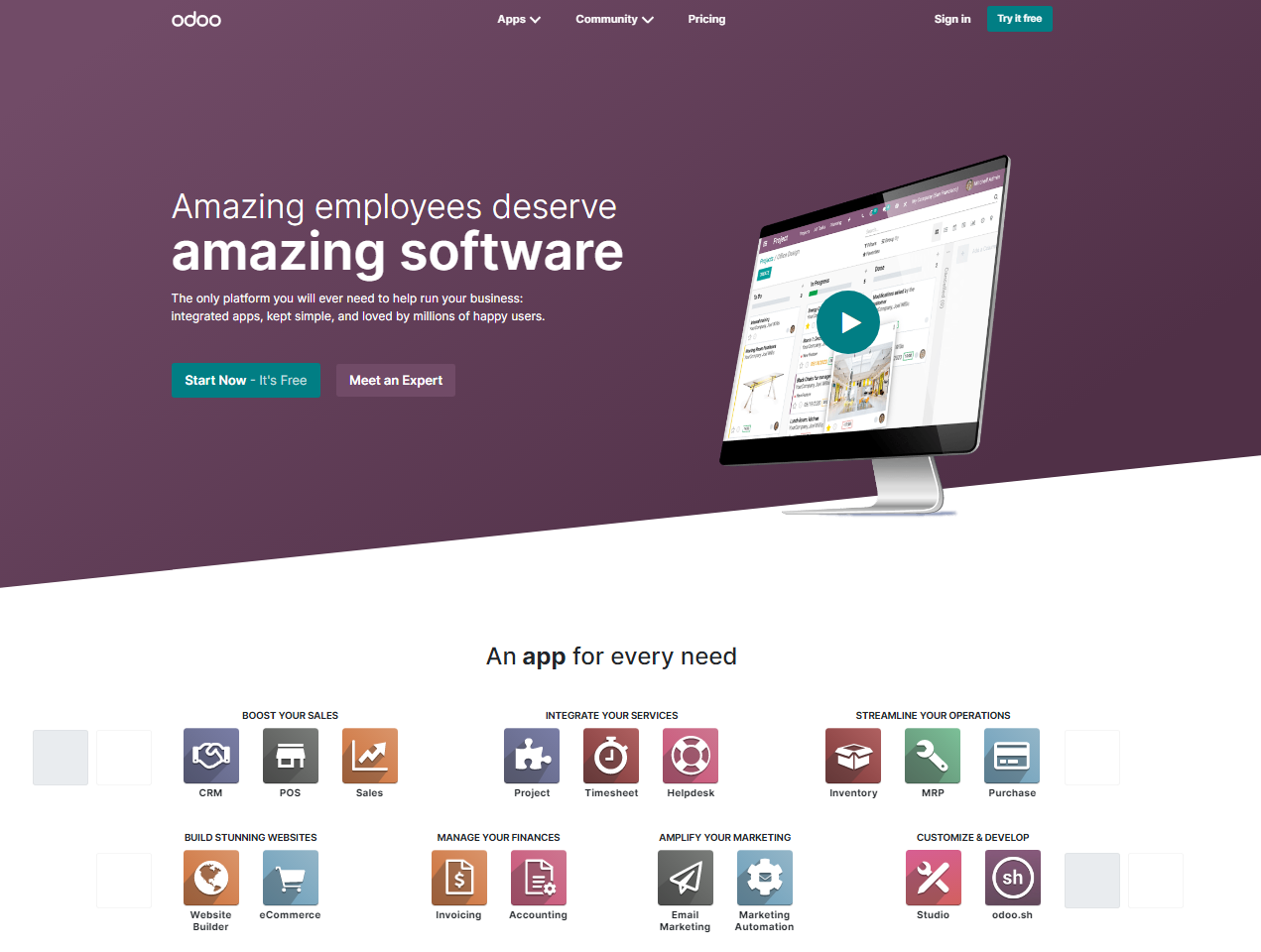
3. Delivrd - Cloud-based inventory software free
 Delivrd is a free cloud-based inventory management software that works for all types of businesses. It supports a single user and location and has a product library of up to 10 products, stock level alerts, transaction history, email support, and stock reception in its free version. It uses barcode scanning to increase inventory accuracy and streamline logistics processes. The retail and e-commerce businesses are the main users of this system.
Delivrd is a free cloud-based inventory management software that works for all types of businesses. It supports a single user and location and has a product library of up to 10 products, stock level alerts, transaction history, email support, and stock reception in its free version. It uses barcode scanning to increase inventory accuracy and streamline logistics processes. The retail and e-commerce businesses are the main users of this system.
Key Features
- Alerts/Notifications
- Barcode / Ticket Scanning
- Reorder Management
- Reporting/Analytics
- Barcoding/RFID
- Inventory Management
- Inventory Optimization
- Multi-Channel Management
- Product Identification
- Supplier Management
- Warehouse Management
What's Missing
- Integrations are minimal with the cloud-based inventory management systems free
What's Included for Free:
- Single stocking location
- Only one user
- Create a product catalog with up to ten items.
- Stock count, receipt, and distribution
- Alerts for low stock levels
- History of inventory transactions
- Email assistance
Pricing
- Advanced Inventory&Order Management - $49.99 per user per month
- Enterprise - Custom Plan
.png?width=632&height=436&name=chime%20(1).png)
4. PartKeepr - Best free inventory management software for the manufacturing
 PartKeepr is an open-sourced and free tool inventory software. As a result, additional users can customize the application as needed. As a result, PartKeepr is constantly improving and adding new features while remaining fully free.
PartKeepr is an open-sourced and free tool inventory software. As a result, additional users can customize the application as needed. As a result, PartKeepr is constantly improving and adding new features while remaining fully free.
PartKeepr now allows you to maintain inventory levels for both completed goods and components, and there is no limit to how many products or vendors you can track in your system. As a result, producers who need to track materials, components, and final products have the ability to do so.
PartKeepr also supports multiple warehouse management, allowing you to batch products from different production runs. If you discover a fault inside a given run of items, this saves you time.
Key Features
- Inventory & Stock
- Tracking
- Data Import/Export
- Order Management
What's Missing
- Open-source inventory software requiring coding knowledge
What's Included for Free:
- Available on request
Pricing
- Partkeepr price is available on request
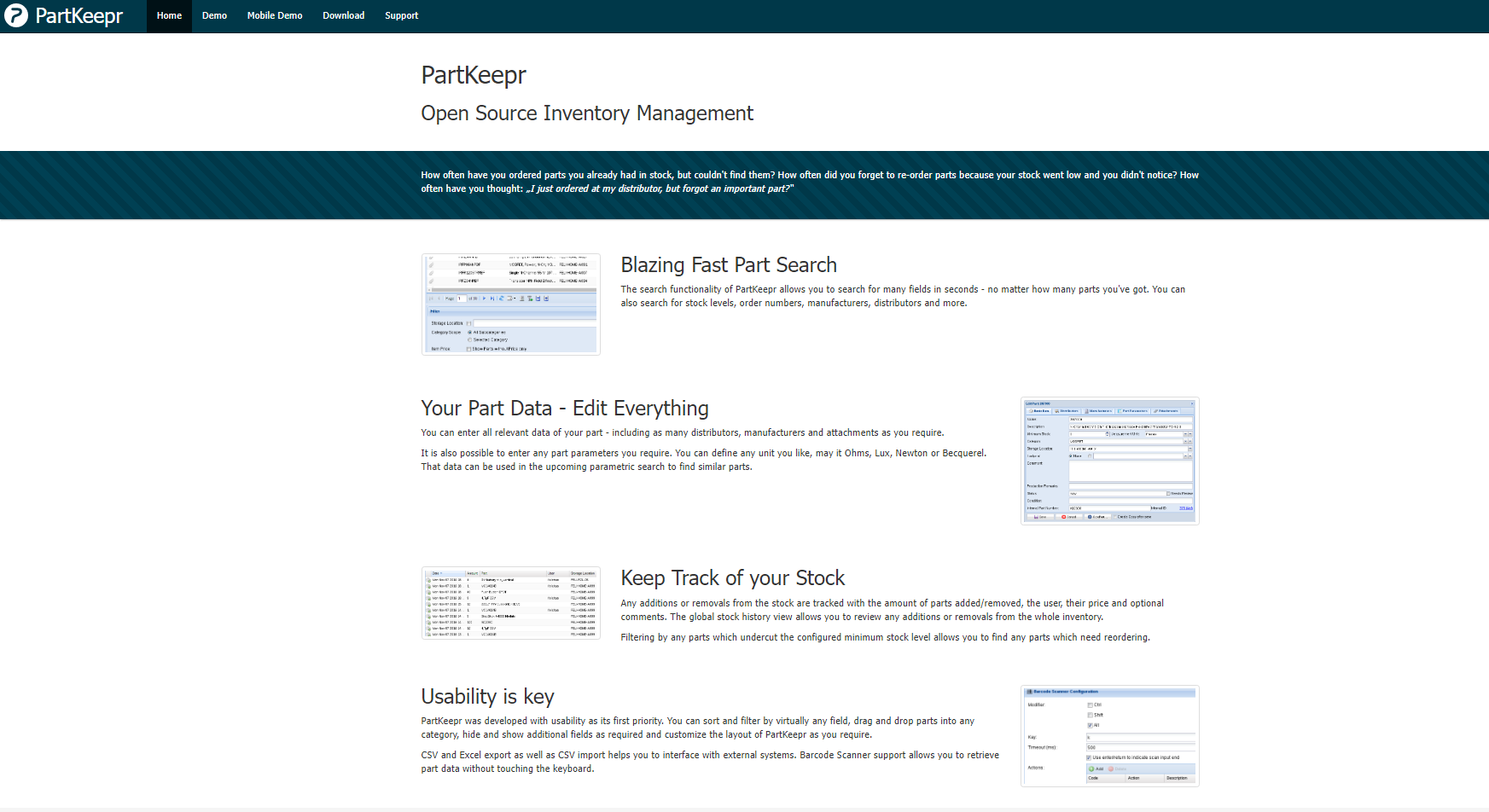
5. RightControl - Best free eCommerce inventory management software
 RightControl is a strong option for eCommerce businesses because it has good warehouse management tools, even if it only allows for one warehouse. You may not only track inventory and allocate stock using RightControl, but you can also generate new barcodes and assign them to individual objects. This makes it simple inventory software for small business and eCommerce companies to add new products to their catalog and maintain track of their inventory. RightControl software also helps you to develop picking lists so that you may satisfy customer orders more quickly and precisely.
RightControl is a strong option for eCommerce businesses because it has good warehouse management tools, even if it only allows for one warehouse. You may not only track inventory and allocate stock using RightControl, but you can also generate new barcodes and assign them to individual objects. This makes it simple inventory software for small business and eCommerce companies to add new products to their catalog and maintain track of their inventory. RightControl software also helps you to develop picking lists so that you may satisfy customer orders more quickly and precisely.
Key Features
- Barcoding/RFID
- Check-in/Check-out
- Serial Number Tracking
- Inventory Optimization
- Inventory Tracking
- Item Management
- Reorder Management
- Supplier Management
What's Missing
- Doesn't support multiple warehouses
- 10 product limit
- Available only on Windows
What's Included for Free:
- One user
- One location
- 10 items/products
- 50 orders/month transactions
Pricing
- Rightcontrol pricing starts at $1.50 per user, per month.
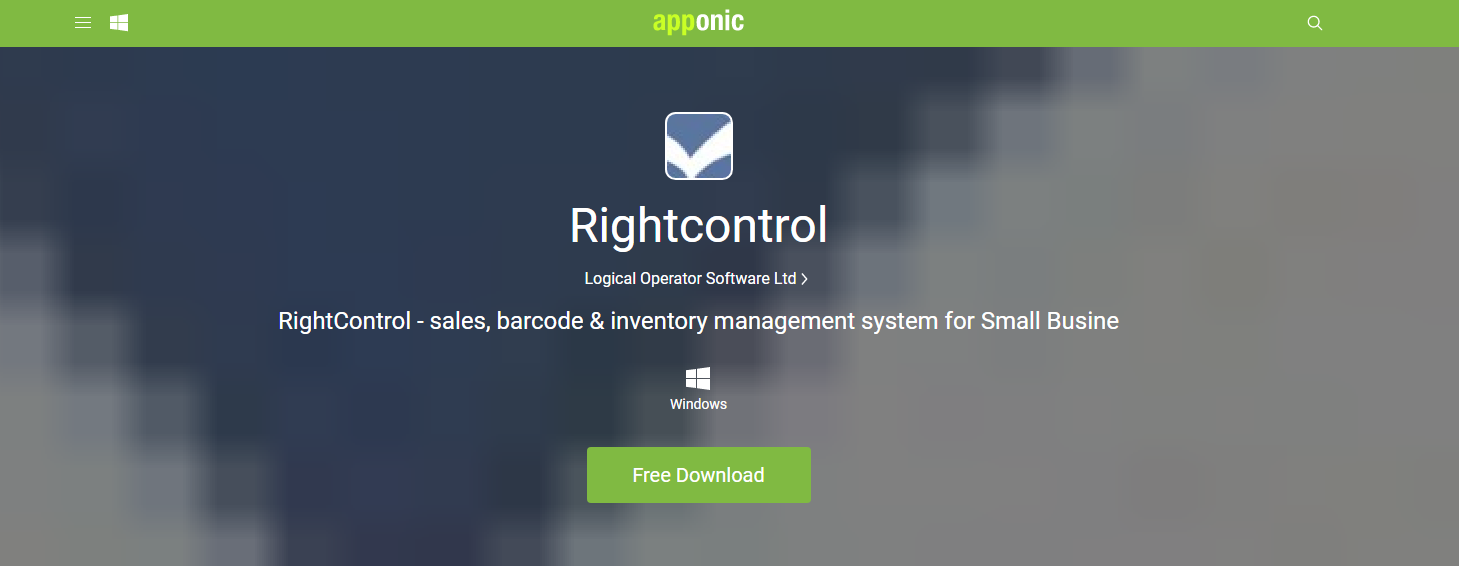
6. InFlow - Best for B2B Companies
 This user-friendly platform includes a central inventory database and B2B showrooms where clients can view and purchase your products. Manufacturers, B2B distributors, online sellers, and retailers can benefit from inFlow's simple yet powerful software. It is the greatest solution for B2B firms because of its strong reporting features and shoppable B2B showrooms.
This user-friendly platform includes a central inventory database and B2B showrooms where clients can view and purchase your products. Manufacturers, B2B distributors, online sellers, and retailers can benefit from inFlow's simple yet powerful software. It is the greatest solution for B2B firms because of its strong reporting features and shoppable B2B showrooms.
The inFlow software is available as a web-based (inFlow Cloud) or computer-based (inFlow Premise) solution, with an easy Android and iOS app. FIFO, moving average, and last-in, first-out (LIFO) algorithms are all supported.
Key Features
- 3PL Management
- Accounting Integration
- Alerts/Notifications
- Contact Database
- Backorder Management
- Barcode / Ticket Scanning
- Barcoding/RFID
- Billing & Invoicing
- Cataloging/Categorization
- Check-in/Check-out
- Cost Tracking
- Customization
- Forecasting
- Simple inventory management software free
- Inventory Optimization
What's Missing
- Only Shopify can fully integrate the system.
- A local network is used to sync client data. The system can only be accessed by computers connected to this network.
- It's only compatible with the Windows operating system.
- Only the server computer stores backups.
What's Included for Free:
- Inventory
- Purchasing
- Sales
Pricing
- Starts at $79.00 /month
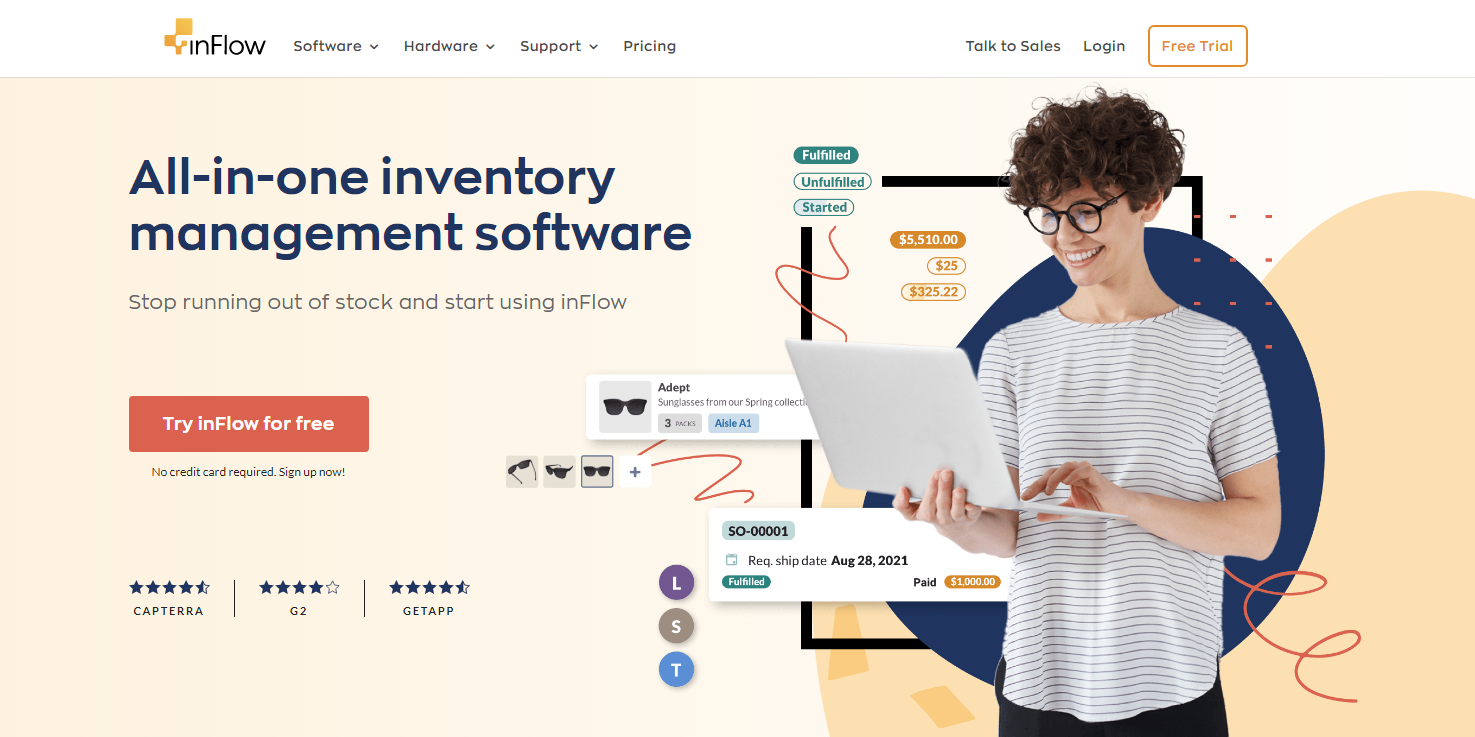
7. Boxstorm - Best simple inventory software free
 Boxstorm is a feature-rich and user-friendly interface that works with both eCommerce and QuickBooks. It is suitable for small enterprises due to the limitations on item numbers and transactions, but if you outgrow the forever free version, it offers an affordable subscription plan. It also offers a smartphone app, however, it isn't as popular as Zoho's or Square. One outstanding feature is the ability to track things by expiration date, lot, or serial number—a useful tool for shelf-life items.
Boxstorm is a feature-rich and user-friendly interface that works with both eCommerce and QuickBooks. It is suitable for small enterprises due to the limitations on item numbers and transactions, but if you outgrow the forever free version, it offers an affordable subscription plan. It also offers a smartphone app, however, it isn't as popular as Zoho's or Square. One outstanding feature is the ability to track things by expiration date, lot, or serial number—a useful tool for shelf-life items.
This free inventory management for small business received excellent marks for dozens of inventory features like barcoding, cycle counting, and automated reordering, but it fell short of scoring better due to transaction and inventory item limits. Its CRM manager isn't as comprehensive as Zoho's, but it has more robust vendor management tools than Square's free edition.
Key Features
- Alerts/Notifications
- Forecasting
- Inventory Optimization
- Kitting
- Supplier Management
- Mobile Access
- Multi-Channel Management
- Product Identification
- Reorder Management
- Reporting/Analytics
- Warehouse Management
- Inventory management for small business free
What's Missing
- Limited items and transactions
- No variants
What's Included for Free:
- One user
- One location
- 25 items/products
- 100/month transactions
Pricing
- Pro - $79 per month
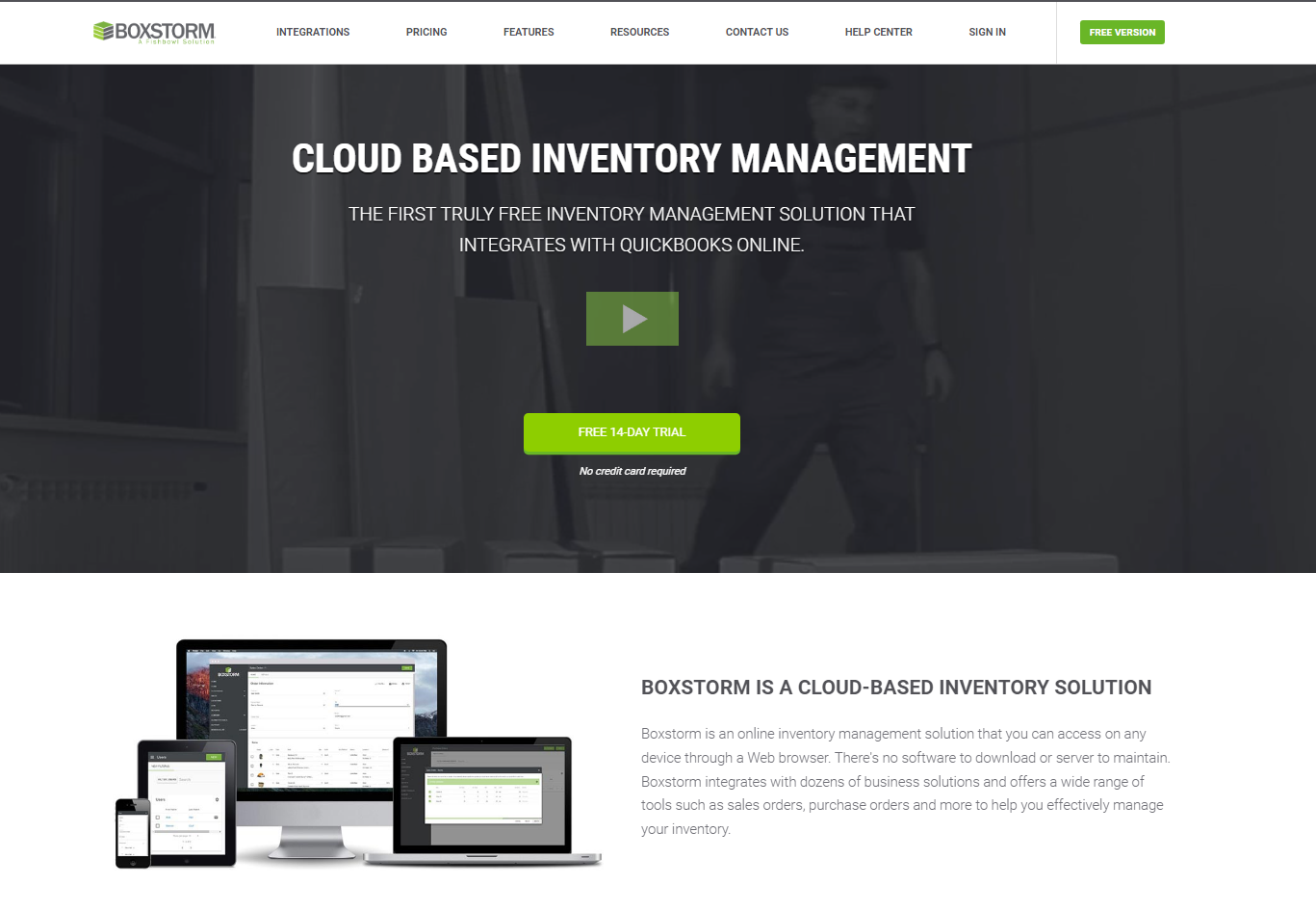
8. Stockpile - Best stockroom inventory software for free
-Mar-27-2024-11-49-41-2058-AM.png?width=133&name=%D0%B7%D0%B0%D0%B2%D0%B0%D0%BD%D1%82%D0%B0%D0%B6%D0%B5%D0%BD%D0%BD%D1%8F%20(3)-Mar-27-2024-11-49-41-2058-AM.png) The Stockpile inventory system is the only free software on our list. It's a pure inventory system, unlike Square, which is related to its retail, or the other systems on our list, which contain eCommerce capabilities and integrations. As a result, we recommend it for firms that have a lot of simple inventory but don't require sales. If you require kitting or bundling, however, Odoo should be considered.
The Stockpile inventory system is the only free software on our list. It's a pure inventory system, unlike Square, which is related to its retail, or the other systems on our list, which contain eCommerce capabilities and integrations. As a result, we recommend it for firms that have a lot of simple inventory but don't require sales. If you require kitting or bundling, however, Odoo should be considered.
While this free inventory stock management software supports an unlimited number of items, users, locations, and other features, the real functionality is limited to basic inventory management. You can't construct bundles, generate buy orders, or program variants. It's a useful tool for keeping track of goods in numerous locations.
[Related article: eCommerce CRM: The 12 Best Software Systems]
Key Features
- Alerts/Notifications
- Reorder Management
- Reporting/Analytics
- Supplier Management
- Warehouse Management
- Inventory management software freeware
What's Missing
- It's tough to print photos of inventoried things.
- Searches frequently return irrelevant results.
What's Included for Free:
- Unlimited users
- Unlimited locations
- Unlimited items/products
- Unlimited transactions
Pricing
- No paid plans

9. Square - Best free retail inventory software
 Square is the best free small business inventory management, with a full suite of inventory management tools for an infinite number of products and users. It also has an eCommerce platform, which we think is great for stores. Square is ideal for retailers who want to manage inventory control software free and sell in-store, online, by invoice, and on the go. Find out also what CRMs are ideal for retaliers here.
Square is the best free small business inventory management, with a full suite of inventory management tools for an infinite number of products and users. It also has an eCommerce platform, which we think is great for stores. Square is ideal for retailers who want to manage inventory control software free and sell in-store, online, by invoice, and on the go. Find out also what CRMs are ideal for retaliers here.
This software for inventory management received high marks for usability, affordability, and our expert ranking. Only the absence of kitting and bundling capabilities, stock management across numerous locations, and limited customer service hours prohibited Square from ranking better. It also lacks the customization features of Odoo.
Key Features
- Access Controls/Permissions
- Barcode / Ticket Scanning
- Billing & Invoicing
- Employee Management
- Commission Management
- Customer Accounts
- Customer Management
- Discount Management
- eCommerce Management
- Electronic Payments
- Electronic Signature
- Gift Card Management
- Inventory Management
- Labor Cost Calculator
- Loyalty Program
What's Missing
- Simple features
- There are no features for suppliers, purchasing, or barcodes.
- Payment processing is only possible with Square POS.
What's Included for Free:
- Unlimited users
- Unlimited locations
- Unlimited items/products
- Unlimited transactions
- Dashboard
- Reporting and analytics
- Square Checking
- Customer Directory
Pricing
Square's pricing is straightforward for companies of all sizes. There are no contracts, small print, or manuals required to utilize it. Pay 2.6% plus $10 each swipe or 3.5% plus $15 per transaction manually input.
-3.png?width=672&height=428&name=square%20sc%20(1)-3.png)
10. SalesBinder - Best free office inventory software
 While we have a few inventory managers on our list that are made outside of the United States, SalesBinder is a fantastic free inventory tracking software that works in over 130 countries. This user-friendly interface also allows for a lot of customization. Its free plan has a monthly record limit, which it counts as inventory items, accounts, or orders—no other inventory tracker on our list does.
While we have a few inventory managers on our list that are made outside of the United States, SalesBinder is a fantastic free inventory tracking software that works in over 130 countries. This user-friendly interface also allows for a lot of customization. Its free plan has a monthly record limit, which it counts as inventory items, accounts, or orders—no other inventory tracker on our list does.
Integrations are not available in SalesBinder's free plan. It does, however, provide powerful inventory recording and monitoring capabilities, as well as significant sales and customer relationship management capabilities. When you consider that the plans start at just $9 per month (the lowest aside from RightControl), it's an excellent management software for small businesses with limited clients and inventory, as well as those just getting started.
Key Features
- Alerts/Notifications
- Inventory Optimization
- Kitting
- Reporting/Analytics
- Manufacturing Inventory Management
- Mobile Access
- Multi-Channel Management
- Product Identification
- Reorder Management
- Retail Inventory Management
- Supplier Management
- Warehouse Management
What's Missing
- No integrations in the free plan
- Limited items
- No mobile app for Android; low-ranking app on iOS
What's Included for Free:
- One user
- Unlimited locations
- 100 items/products
- Unlimited transactions
Pricing
- Starter - $9 per month
- Bronze - $19 per month
- Silver - $49 per month
- Gold - $99 per month
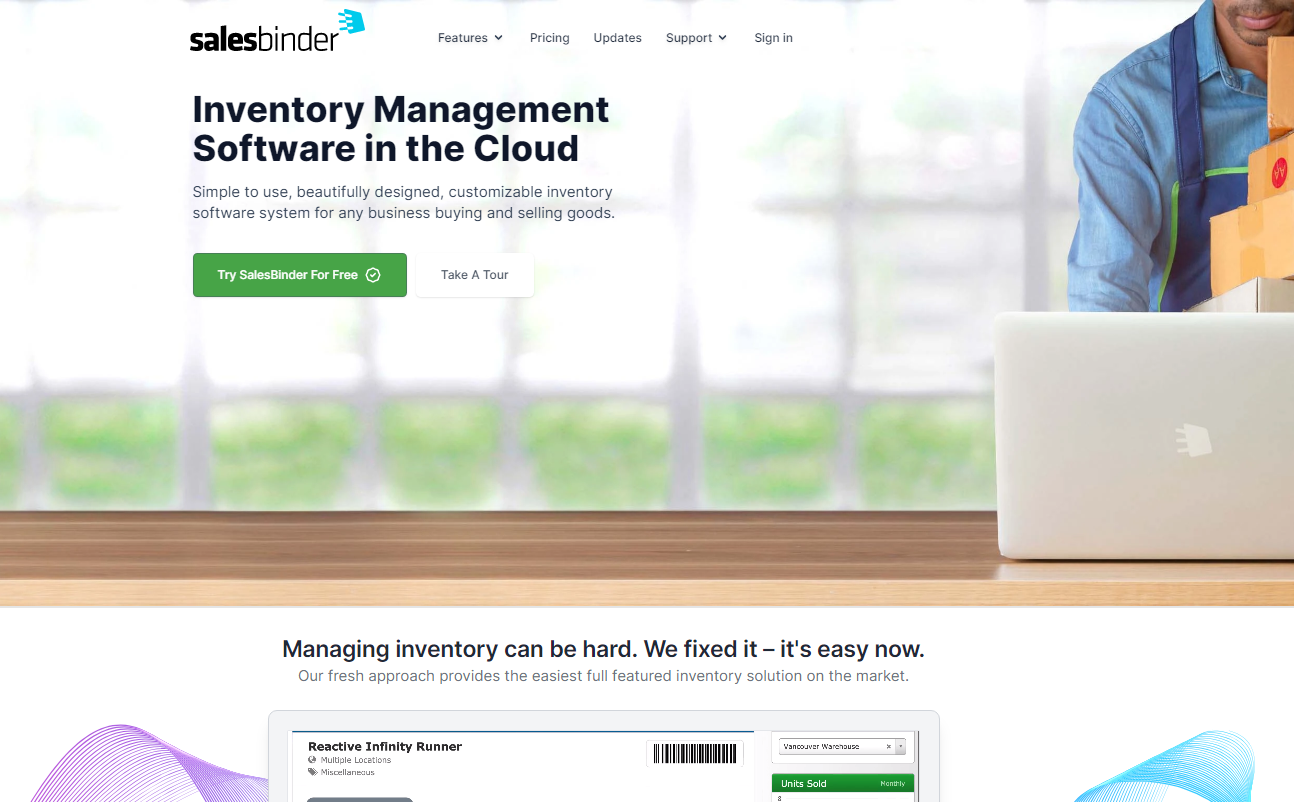
Choosing the right free software for inventory software for your business
To find the right free inventory control software for your business, start by assessing your needs, current systems, and future growth plans. Be sure to test the systems as well.
Step 1: Identify your requirements
List essential features you need, such as the number of users, products, orders, and locations the software should handle on its free plan. Consider the type of inventory you're tracking and additional details like variants, purchase orders, vendor information, parts, warehouse location, and sales history. Differentiate between essential and desirable features, as free software may have limitations. If you can't compromise, consider paid options under $100 per month.
Step 2: Evaluate existing systems
If you already use software like QuickBooks, an online store, or an invoicing system, ensure the new inventory software integrates with it. Disconnected systems can lead to manual reconciliation and errors. Ideally, look for software with at least a one-way integration, or better yet, a two-way sync for seamless data flow. Also, consider your existing workflows, such as receiving, counting cycles, reporting, or restocking. The new software should streamline these processes rather than add manual work.
Step 3: Create a shortlist and test the options
After identifying your needs, shortlist five to ten systems that meet your requirements. You can either sign up and try each one or request a professional demo. Free software for inventory control allows easy trial, so take advantage of it. Generally, easy-to-use software may offer fewer features, while feature-rich options can be complex. Decide what matters more to you, as a feature is only useful if you actively use it.
Step 4: Plan for future growth
Before finalizing your choice, think about where your business will be in the next six months, a year, and three years. While switching systems later is possible, it's often a hassle. Choose software that can accommodate your growth.
Final Thoughts

As you can see, simply because a solution is free does not imply that it is lack features or benefits. While free stock manager software may not be the best option for global corporations, it can be the first step toward organization and profitability for smaller businesses.
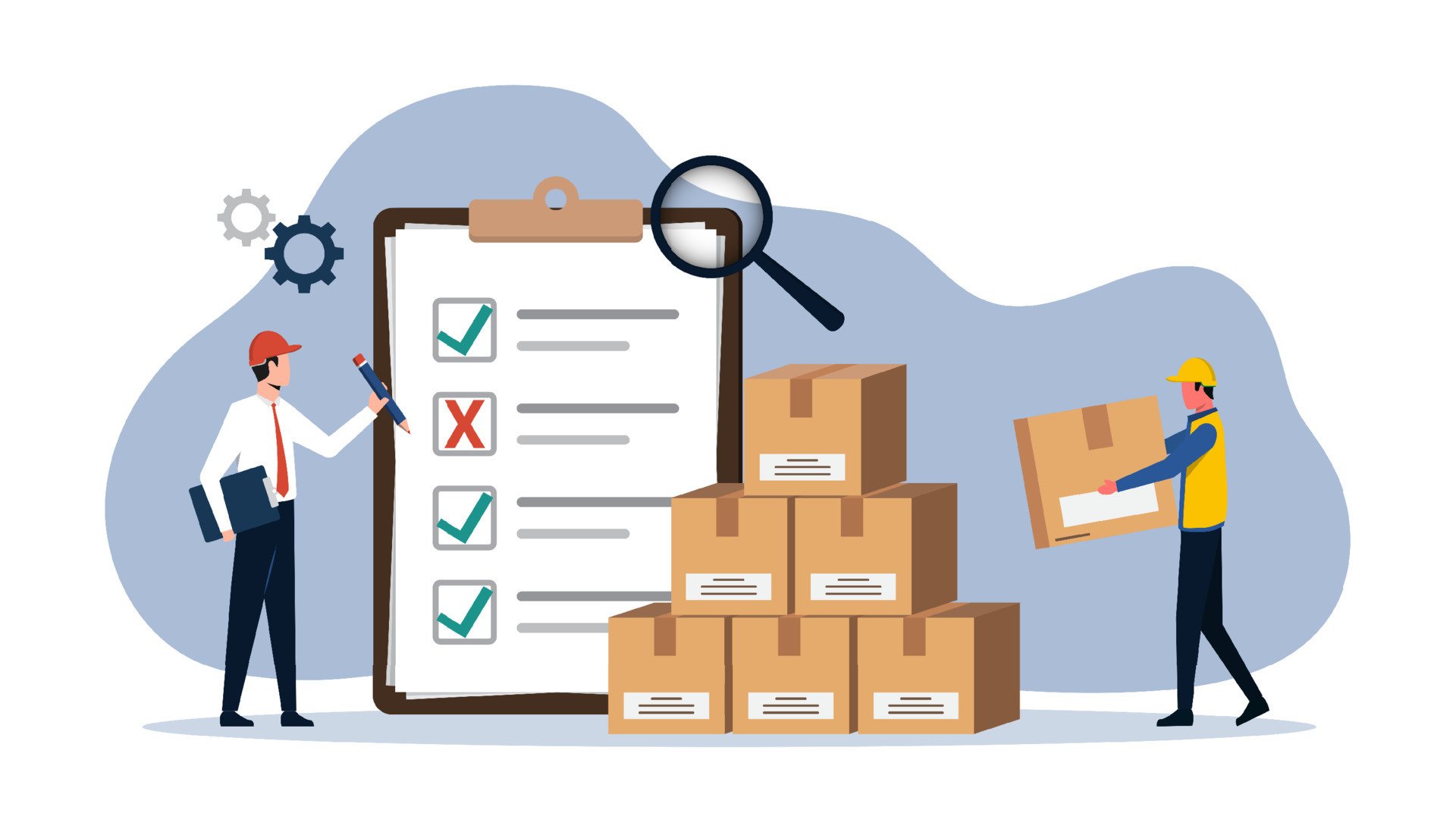
.png?width=140&height=140&name=Noah%20(1000%20x%201000%20px).png)
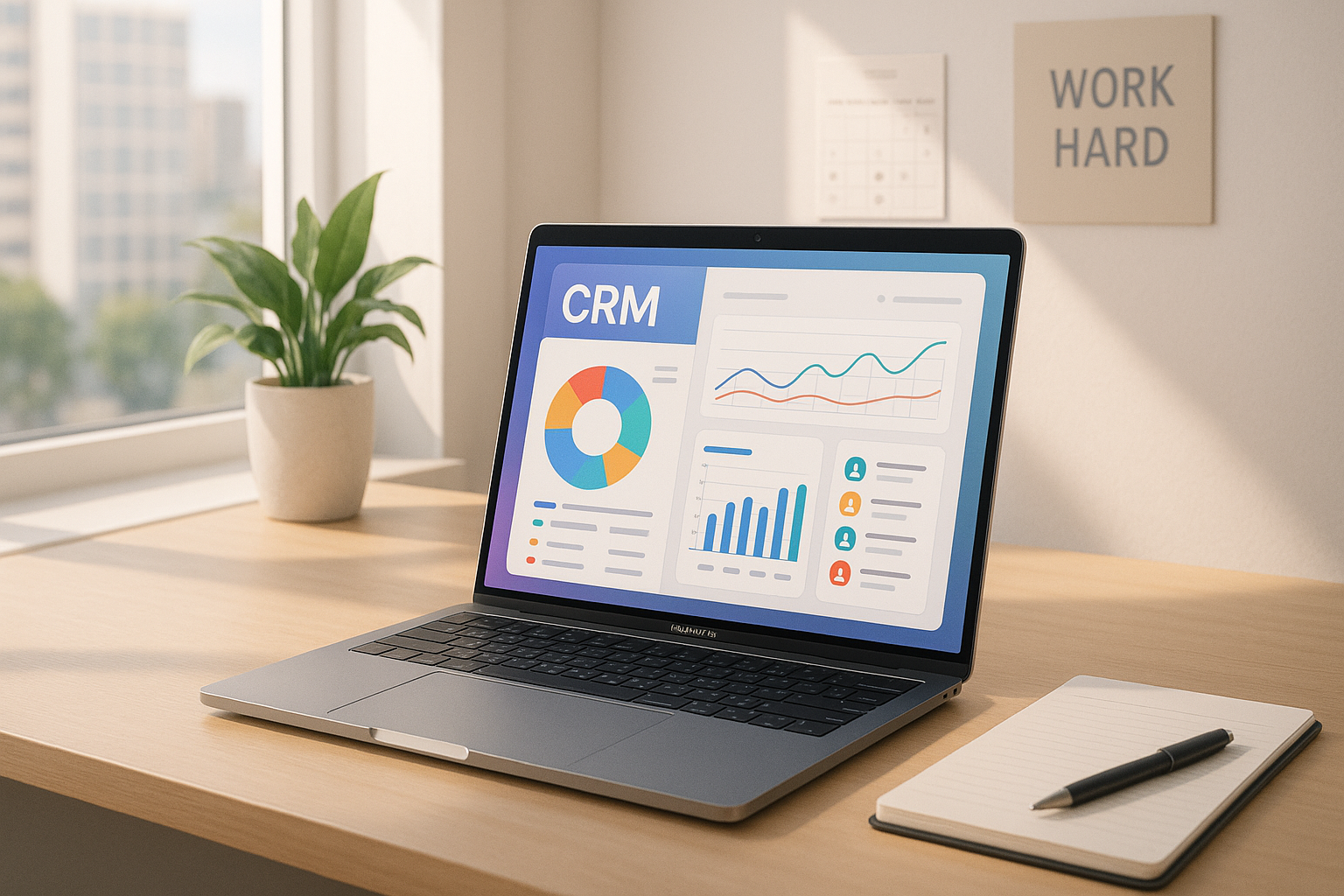

(2).jpg)
